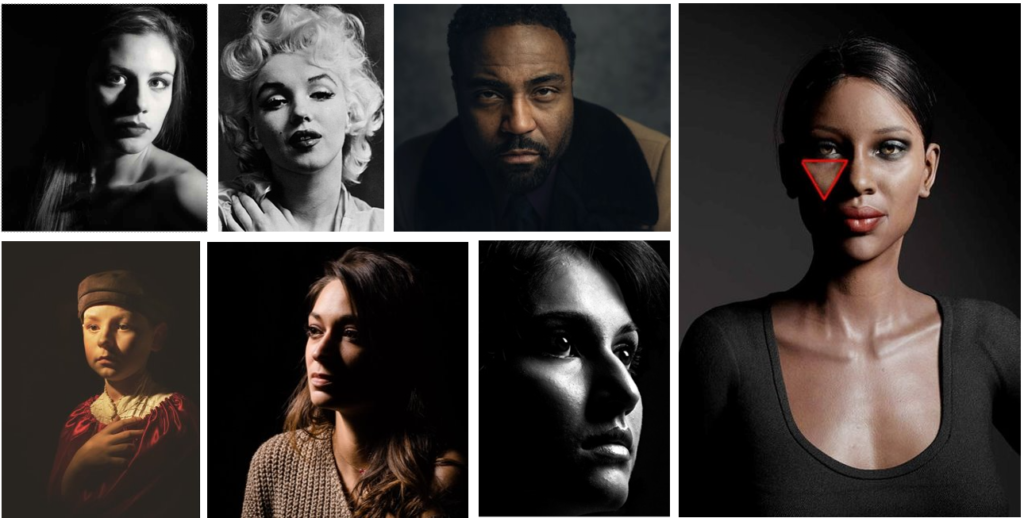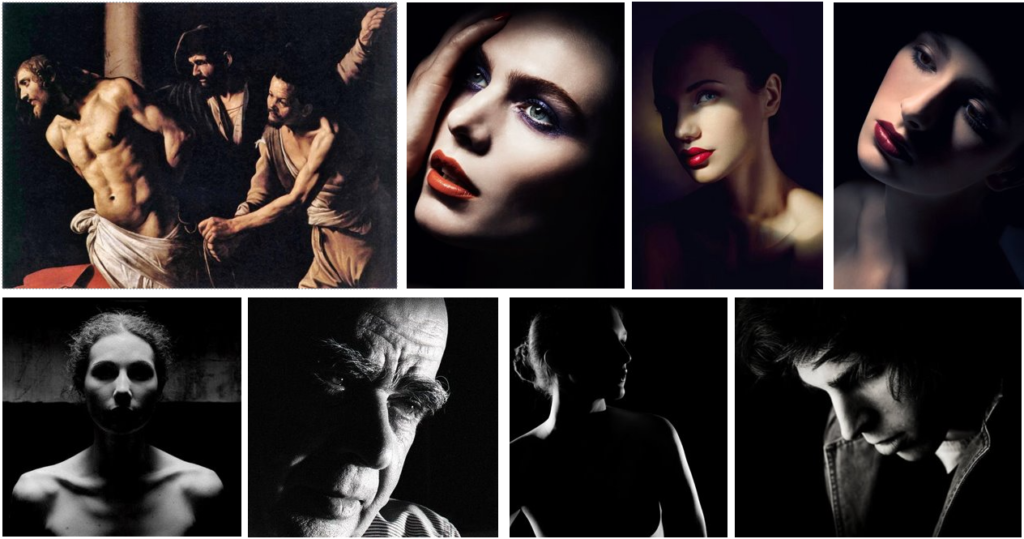In most cases we can make use of natural or available / ambient light, but we must be aware of different kinds of natural light and learn how to exploit it thoughtfully and creatively. We can do this by looking at the:
- intensity of the light
- direction of the light
- temperature of the light (and white balance on the camera)
- making use of “the golden hour”
- Using reflectors (silver / gold)
There are different types of studio lighting that we can use such as Rembrandt, butterfly and chiaroscuro.
Rembrandt Lighting
Rembrandt lighting is a technique for portrait photography named after Rembrandt Harmenszoon van Rijn, a Dutch painter. It refers to a way of lighting a face so that an upside-down light triangle appears under the eyes of the subject.

Chiaroscuro Lighting
Chiaroscuro, Italian for lightdark, is bold contrast between light and dark. It first appeared in 15th century paintings in Italy and Holland. However, true chiaroscuro began during the 16th century in Mannerism and Baroque art. Dark subjects are dramatically lighted by a shaft of light, creating a split of light and shadow.

Butterfly Lighting
Butterfly lighting is a type of portrait lighting technique used mainly in a studio setting. Its name comes from the butterfly-shaped shadow that forms under the nose because the light comes from above the camera. It is also sometimes called ‘paramount lighting’ or ‘glamour lighting’.


Good start to showing your understanding of studio lighting.
You may find it easier to have individual blog posts for each lighting effect (Rembrandt / Chiaroscuro / Butterfly)
Make sure you include the below points for each type of lighting.
What is XXX Lighting,
What is XXX Lighting Used for?
Examples of XXXLighting.
How to set up XXX lighting (with diagram).
Your photo of the lighting set up.
Your Response (contact sheet and 3-6 top photos).